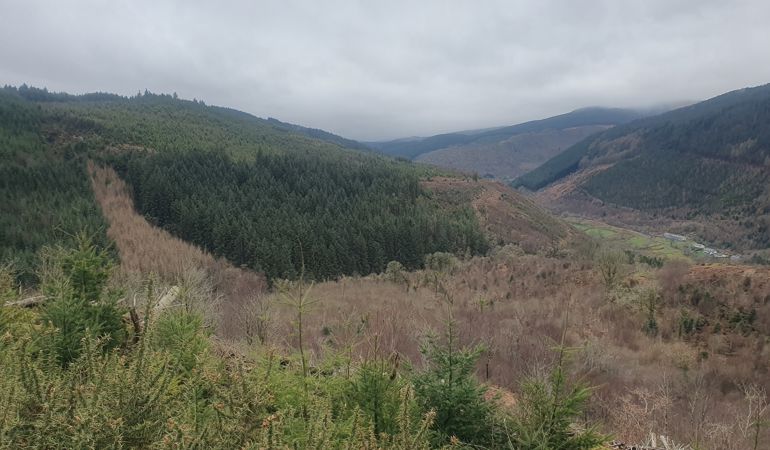Woodland work benefiting wildlife and biodiversity

Habitats and wildlife on ancient woodland sites managed by Natural Resources Wales (NRW) are benefiting from biodiversity restoration work.
The work, funded with £750,000 from the Welsh Government’s Nature Networks Fund, is taking place at Gwydyr Forest in Gwynedd, Dyfi Forest in Ceredigion and the Wye Valley woodlands in Monmouthshire to help reverse the impact of the nature emergency and mitigate impacts of climate change.
It includes conifer thinning and non-native species control to allow light into planted woodlands to develop ground vegetation.
This gives cover for important species such as dormice and creates nectar sources for pollinating insects.
Patrick Green, NRW’s manager for the Nature Networks Programme on the Welsh Government Estate, said:
"Our officers will continue this important work for the next two years to create joined up networks of restored habitat – which are great for wildlife and people.
“Highly invasive non-native species such as rhododendron and Western hemlock, which can shade out vegetation in woodland, will be removed to improve habitats for a range of species including rare lichens, dormice, lesser horseshoe bats and pollinating insects.
“This is part of our work to manage the Welsh Government Woodland Estate for future generations and tackle the nature emergency. It will create more resilient and joined-up habitat networks and introduce more structural and genetic diversity to our woodlands.”
The work started last winter and will continue until at least March 2025.
The Nature Networks Fund is a programme delivered in partnership by Welsh Government, National Lottery Heritage Fund and NRW to strengthen the resilience of Wales’ network of protected land and marine sites, supporting nature’s recovery while actively encouraging community engagement.
